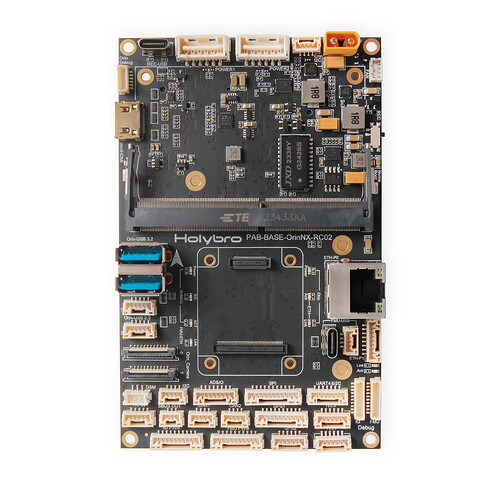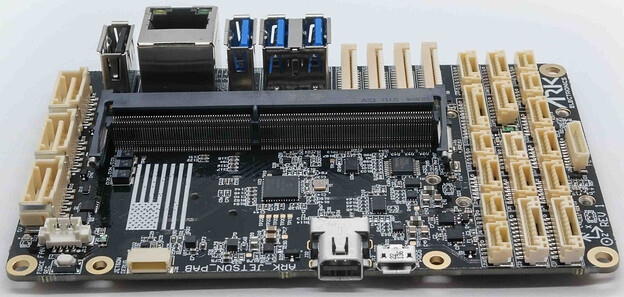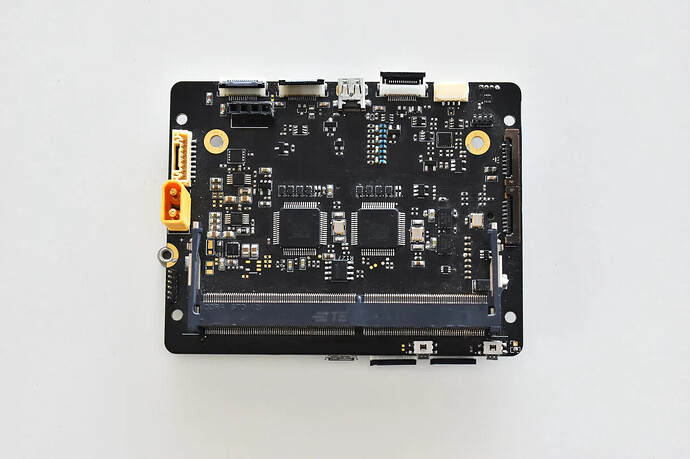If you’re diving into drone or robotics projects powered by NVIDIA Jetson modules, you’ve probably come across various carrier boards. These boards are the unsung heroes that connect your powerful AI processors to the sensors, cameras, and autopilot systems keeping drones flying and robots navigating.
Today, let’s explore what firmware Jetcore supports and see how it stacks up against two popular competitors: the Holybro Pixhawk Jetson Baseboard and the ARK Jetson PAB Carrier. Spoiler alert: We’ll uncover which board might be the perfect fit for your next project!
What Firmware Does Jetcore Support?
Firmware is the essential brain software that controls the “hardware moves” in drones — like flying, stabilizing, and communicating with ground stations. Two firmware leaders dominate the drone scene: PX4 and ArduPilot. JetCore is designed to work hand-in-hand with these popular systems.
Here’s the catch: Jetcore itself doesn’t run the firmware. Instead, it connects with standard flight controllers (like Pixhawk devices) where the firmware lives and flies. So, Jetcore acts as the AI powerhouse processing your robot’s advanced vision, obstacle avoidance, and sensor data, while your flight controller handles the real-time flight commands. Together, they make a smart, reliable drone or robot.
Jetcore vs Holybro Pixhawk & ARK Jetson: Which Carrier Board is Right for Your Next Big Idea?
Let me tell you about a robotics engineer at a fast-growing startup. His team is working on a new autonomous inspection drone for solar farms. Their challenge? Squeezing powerful AI, reliable autopilot, and rugged reliability into a package that’s light enough to fly long missions, yet tough enough for the field.
His stack is already pretty sweet: a Pixhawk for rock-solid flight control and an NVIDIA Jetson for advanced vision and data analysis. But when it came time to pick the carrier board to bring it all together, three options kept coming up: Jetcore, Holybro Pixhawk Jetson Baseboard, and ARK Jetson PAB Carrier.
Let’s walk through his thought process and see how each board shapes up.
The Holybro Pixhawk Jetson Baseboard: Built for Convenience
Holybro’s board is a popular choice for a reason. It’s a single board that combines the Pixhawk autopilot and an NVIDIA Jetson, so everything is nicely integrated. You get UART, CAN, and Ethernet connectivity right out of the box, plus slots for WiFi/Bluetooth and NVMe SSDs. This is great if you want a plug-and-play solution for PX4 or Ardupilot firmware, and you’re looking for a board that’s easy to wire up and deploy.
But he noticed two things: first, the board is larger and heavier than some alternatives. Second, the power system is limited to 7-21V (3-4S), and while there are workarounds for higher voltages, it adds complexity. Finally, the Holybro board is optimized for Pixhawk and Jetson together—so if you want to use a different autopilot, or keep your options open, you might feel boxed in.
The ARK Jetson PAB Carrier: Rugged, But Not Always Flexible
The ARK Jetson PAB Carrier is a solid, industrial-grade board. It’s built tough for environments where dust, vibration, and temperature swings are the norm. The ARK offers a wide range of connectivity options and is compatible with many NVIDIA Jetson modules. For teams focused on commercial or industrial applications, this is a strong contender.
But his team is building drones, not industrial robots. The ARK board is heavier and bulkier than they need, and while it’s reliable, it doesn’t offer the kind of native, seamless integration with Pixhawk and popular drone firmware that Sam wants. Plus, the cost is higher, and the board is overkill for their use case.
Jetcore: The Smart Choice for Innovators
This is where his eyes light up. Jetcore is ultra-compact—about the size of a credit card and weighing just 40 grams. It supports all the latest Jetson modules, plus built-in IMU, crypto-auth security, and a ton of ports (7x USB, Gigabit Ethernet, CAN, UART, I2C, PCIe, NVMe, dual CSI cameras). JetCore lets Sam connect any Pixhawk or similar autopilot and run PX4 or Ardupilot firmware with no hassle.
But here’s the real kicker: Jetcore is engineered for flexibility and fast development. Want to switch autopilots, add sensors, or experiment with different Jetson modules? No problem. The board’s design is all about making it easy to prototype, test, and deploy—without getting locked into a single architecture.
With JetCore, he can:
- Prototype faster: The board’s size and weight make it perfect for drones and mobile robots, with plenty of connectivity for sensors and peripherals.
- Scale smarter: As the project grows, JetCore can handle new modules and use cases right out of the box.
- Deploy with confidence: With industrial-grade reliability, crypto-auth security, and native integration with leading drone platforms, JetCore is ready for the real world.
Feature Comparison: Jetcore vs Holybro Pixhawk Jetson Baseboard vs ARK Jetson PAB Carrier
| Feature | Jetcore | Holybro Pixhawk Jetson Baseboard | ARK Jetson PAB Carrier |
|---|---|---|---|
| Supported Jetson Modules | Nano, Xavier NX, Orin Nano/NX, TX2 NX | Orin Nano, Orin NX | Orin NX, Nano |
| Carrier Size | 88 x 71 mm (credit card sized) | Larger, heavier (Pixhawk + Jetson combo board) | Heaviest (~160g with Jetson & heatsink + FC) |
| Weight | 40 grams (without jetson and flight controller) | 85(without jetson and flight controller) | 80 grams (without jetson and flight controller) |
| Connectivity | 7x USB, Gigabit Ethernet, CAN, UART, I2C, PCIe, NVMe SSD, dual CSI cameras | USB ports, Ethernet, WiFi, Camera support | USB3.2 + USB2.0, Gigabit Ethernet, CAN, 4x MIPI CSI cameras |
| Built-in Sensors | Integrated IMU (motion sensing) | Pixhawk flight controller with triple IMU redundancy | Triple synced IMUs, Integrated heater for sensor stability |
| Security Features | Crypto-auth security | Secure boot & secure data handling | NDAA compliant, focus on industrial security |
| Firmware Support | Integrates with PX4 and ArduPilot via external flight controllers | Designed tightly for Pixhawk and PX4 | Compatible with PX4 via PAB flight controllers |
| Target Use Cases | Drones, robotics, industrial edge, space/weight constrained apps | Drones relying on Pixhawk autopilot ecosystem | Industrial & commercial drones with rugged needs |
| Power Requirements | Flexible with robust power design | 7-21V input (3-4S batteries) | 5V, 4A minimum |
| Price Range | Highly competitive | Higher, due to combined flight controller + Jetson | Mid to high, industrial grade |
The Verdict: Jetcore Wins for Innovation and Flexibility
Holybro and ARK both bring strong options to the table—Holybro shines with easy Pixhawk autopilot integration, and ARK stands out in rugged industrial setups. But Jetcore’s lightweight design, unmatched flexibility, and future-ready features put it in a league of its own.
It’s not just about fitting into tight spaces; Jetcore empowers you to design smarter, faster, and more versatile drones and robots. Its extensive connectivity, built-in sensors, and seamless compatibility with popular flight firmware like PX4 and ArduPilot mean fewer compromises and faster development.
In a world where innovation moves at lightning speed, Jetcore gives you the freedom to stay ahead—adapting effortlessly as your projects evolve. For creators who want power, portability, and flexibility wrapped into one compact board, Jetcore isn’t just a choice. It’s the clear winner.


